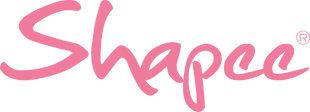Lactation Success: Strategies to Alleviate Engorgement and Avoid Milk Clogs for Nursing Moms
Understanding Engorgement and Milk Clogs: Causes and Effects
What is Engorgement?
Engorgement means your breasts are very full of milk. It can make your breasts feel hard and swollen. This fullness happens when the milk builds up. It can be painful. Sometimes, the milk can't flow out well. This can happen when you don't nurse often or well. Engorgement can also start if you miss feedings. It's important to manage engorgement to keep breastfeeding comfortable.

Signs of a Milk Clog
A milk clog is a block in the flow of milk from your breast. You might feel a small, sore lump in your breast. The skin over the clog might look red and feel warm. Feeding might hurt more than usual. You may notice a slower flow when pumping, too. If not fixed, clogs can lead to mastitis, which is an infection. Spotting these signs early helps avoid bigger problems.
Common Causes of Engorgement and Clogged Milk Ducts
Many factors can cause engorgement and milk clogs. They include:
- Skipping feedings or pumping sessions. This leads to milk build-up.
- Tight clothing or bras that put too much pressure on your breasts.
- Improper latch. This happens when the baby does not attach well to the breast.
- Stress and fatigue can affect your milk flow.
- Dehydration or poor diet may lead to thicker milk.
These are just a few common reasons. They can lead to discomfort and may need care.
Proactive Measures to Prevent Engorgement and Milk Clogs
Establishing a Comfortable Breastfeeding Routine
To avoid the discomfort of engorgement and clogs, start with the foundation: a solid breastfeeding routine. Aim to feed your baby on a regular schedule, listening to their hunger cues. This can help maintain steady milk flow and avoid buildup. Comfort is key while nursing, so invest in a cozy nursing nook with good back support and props like pillows. Remember, the more at ease you are, the smoother the nursing process will be, leading to happier moments for both mom and baby.
The Importance of Regular Breast Massage
Regular breast massage is key for preventing issues during breastfeeding. It helps maintain milk flow and stops clogs. This massage can boost circulation and reduce the risk of engorgement. It should be done gently and often. Moms can do it with or without a breast massage device. It can be done while nursing or pumping to aid milk letdown. Or, it can be a stand-alone routine to keep the milk flowing smoothly. It is a simple and effective way to stay comfortable.
Choosing the Right Products for Nursing Support
To stop engorgement and milk clogs, pick the right nursing aids. A good nursing bra is key. It should fit well and give your breasts room to grow. Also, it must be easy to open for feeding. Breast massage devices can help too. They can move milk and stop clogs. Look for ones that are easy to use and clean. In short, choose items that make nursing comfy and keep milk flow smooth.
Step-by-Step Guide to Alleviating Engorgement and Milk Clogs
How to Identify and Treat Milk Clogs
To treat milk clogs, first look for signs such as a small, hard lump and local pain. If you find these, start with a warm compress to soften the area. Massage gently from behind the lump towards the nipple to move the clog. Try to breastfeed or pump more often, offering the affected side first. If the clog doesn’t clear, keep the breast empty and consider a lactation consultant. Always watch for signs of infection, like redness or fever.
Tips for Managing Engorgement During the Day

To handle engorgement during the day, try these simple tips:
- Nurse often, every 1-3 hours, even if it's just for a few minutes.
- Change nursing positions to help drain all areas of your breast.
- Wear a supportive, yet comfortable, nursing bra to reduce pressure.
- Use cold compresses between feedings to lessen swelling.
- Stay hydrated to maintain a healthy milk supply.
- Avoid tight clothing that may constrict milk flow.
Applying these methods can help you stay comfortable and prevent clogs. Remember to relax and take it one step at a time.
Best Practices for Nighttime Engorgement Relief
To ease nighttime engorgement, consider these steps:
- Nurse or Pump Before Bed: Empty breasts fully to prevent clogs.
- Sleep Position: Lie on your side for better drainage.
- Use Supportive Pillows: Keep breasts elevated to reduce swelling.
- Wear a Sleep Bra: Choose a soft, non-restrictive nursing bra.
- Stay Hydrated: Drink water before bed but not too much to avoid discomfort.
- Warm Compress: Apply a warm cloth if you wake engorged to help milk flow.
- Keep Supplies Close: Have a hand pump and cloths by your bed for quick relief.
Remember, finding what works best for your body is key.

